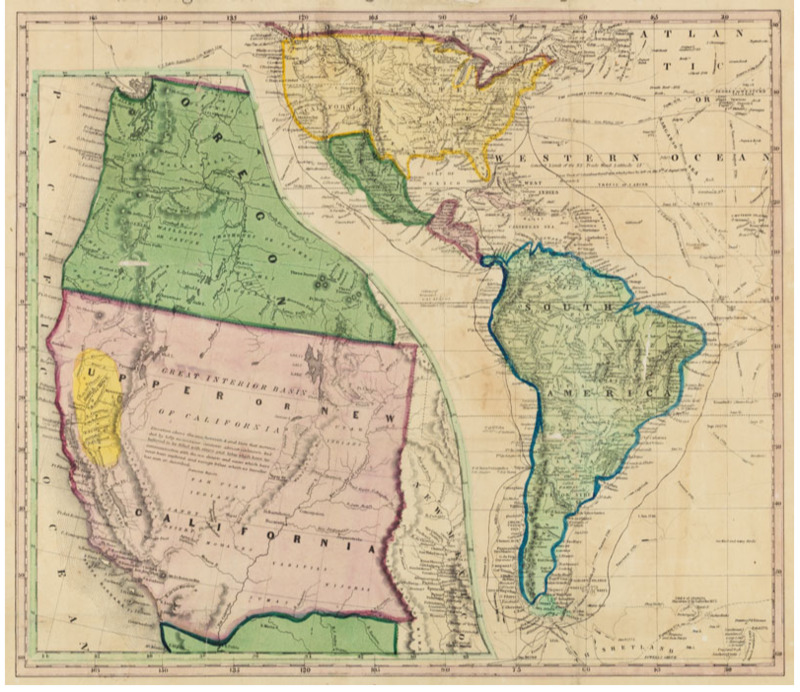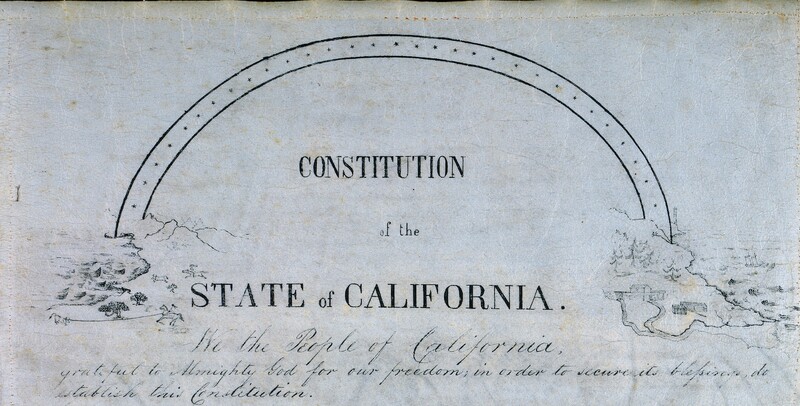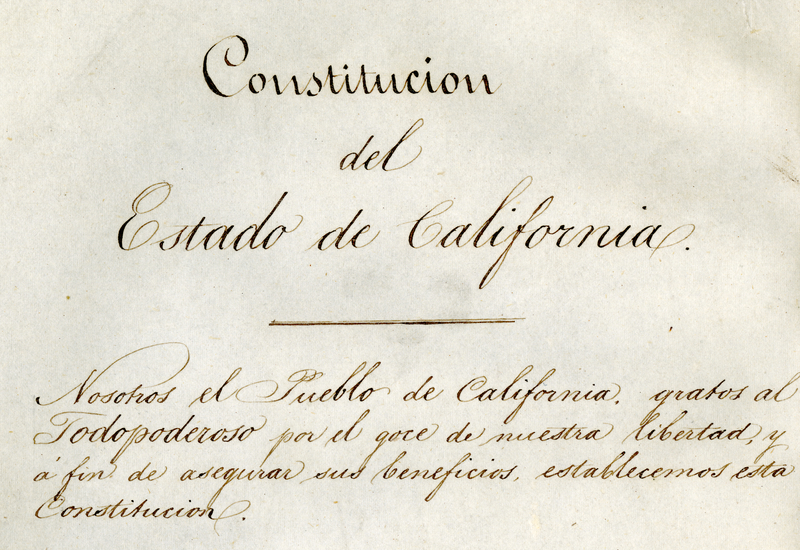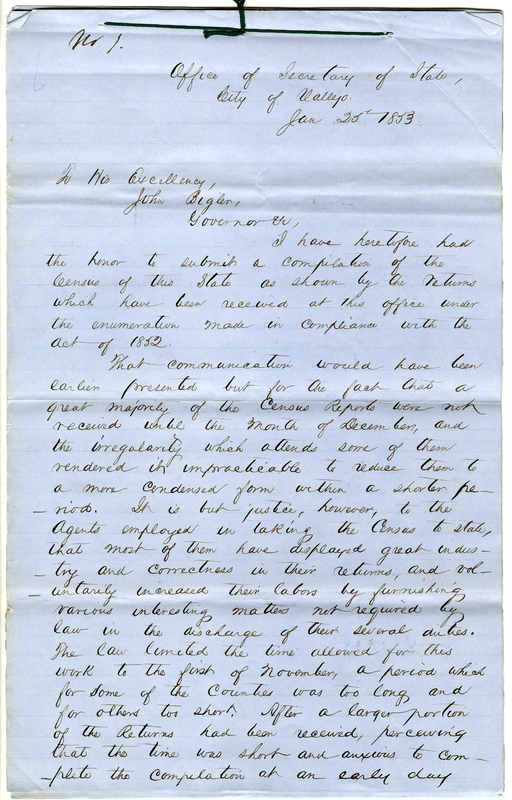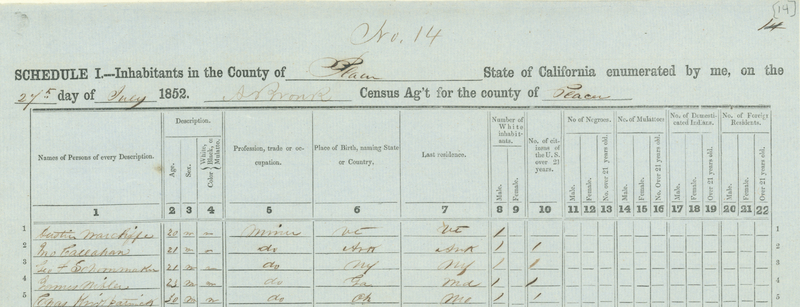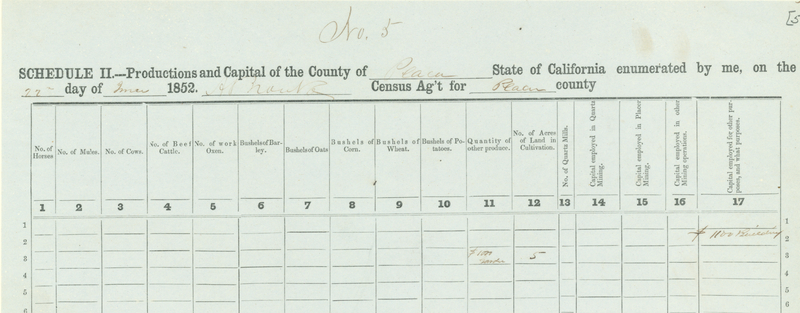Historic Context
California and the Pacific West were home to Native Americans for hundreds of years before the arrival of white settlers in the 16th century. For a 20- year period after Mexican Independence in 1821, California was governed by the newly established nation of Mexico. However, with the end of the Mexican American War in 1848 the American Southwest, including California, was annexed by the United States as determined in the Treaty of Guadalupe Hidalgo.
The trajectories of California and the United States’ were transformed in 1848 when John Marshall discovered gold at Sutter’s Mill in Coloma, California. The news rapidly spread across the nation and world and in the next several years approximately 300,000 people immigrated to the region in search of gold and wealth. This image illustrates the two main travel routes to California, overland trails, and sea routes.
The impact of the Gold Rush was monumental. On one hand, it led to an economic boom, the establishment of cities throughout the state, and the advent of transportation technologies, such as the railroad. On the other hand, the rapid influx of people accelerated the rate at which Native Americans were dying from European diseases and, simultaneously, were brutally forced from their homelands.
As illustrated by these images, California’s Constitution, ratified in 1850, was written in English and Spanish. Over the span of three years, California transformed from a quiet and isolated region to a bustling new state with hundreds of thousands of residents from around the world. To operate effectively, the newly founded state government needed more knowledge about California’s inhabitants and economy, which was collected through a state census.
The United States conducted a nation-wide census in 1850. However, California entered the Union the same year and was not included.
California’s first state Legislature, in Chapter 32 of the Statutes of 1852, mandated that the state needed to complete a census of the state by November 1, 1852. Census-taking was overseen and managed by the California Secretary of State, William Van Voorhies, and his office. Each of the 26 counties in 1852 were enumerated by state-employed census county agents.
The office of the Secretary of State compiled the returns into a final report, titled “Explanatory Report on the Census Returns,” and it was sent to Governor John Bigler. It reported that in 1852 the total state population was 303,808. As indicated by the first page of the report, while the census was conducted in 1852, the returns were not compiled and published until January of 1853.
The Census of 1852 was organized into two categories, Schedule I, “Inhabitants,” and Schedule II “Productions and Capital”.
Schedule I recorded demographics of the state population. The columns were titled as follows
- “Names of Persons of every Description”
- “Description: Age, Sex, Color”
- “Profession, trade, or occupation”
- “Place of Birth, naming State or Country”
- “Last residence”
- “Number of White Inhabitants: Male, Female”
- “No. of citizens of U.S. over 21 years”
- “No. of Negros: Male, Female, No. over 21 years old”
- “No. of Mulattoes: Male, Female, No. over 21 years old”
- “No. of Domesticated Indians: Male, Female, No. over 21 years old”
- “No. of Foreign Residents: Male, Female, No. over 21 years old”
Schedule II recorded production and capital. The categories were titled as follows:
- “No. of Horses”
- “No. of Cows”
- “No. of Beef Cattle”
- “No. of work Oxen”
- “Bushels of Barley”
- “Bushels of Oat”
- “Bushels of Corn”
- “Bushels of Wheat”
- “Bushels of Potatoes”
- “Quantity of other produce”
- “No. of Acres of Land in Cultivation”
- “No. of Quartz Mills”
- “Capital employed in Quartz Mining”
- “Capital employed in Placer Mining”
- “Capital employed in other Mining operations”
- “Capital employed for other purposes and what purposes”.
